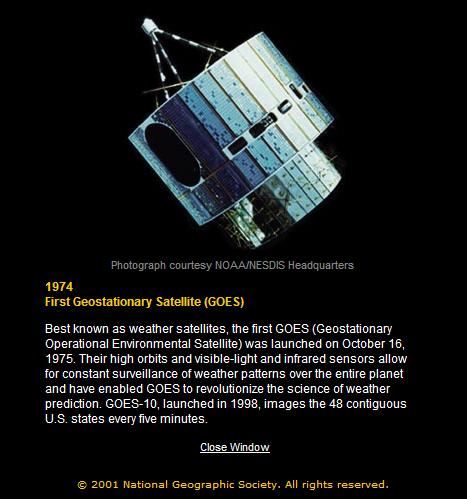This Geocache can be found on its own, or as part of the series
that is placed within this section of land. You do not need to find
any others in order to find this one, and all of them utilize the
same parking location.
You can park your vehicle at N 43d 03.178’ x W 79d 16.229’
There are numerous ATV Trails throughout this area, however
there is no signage to indicated that ATV’s are permitted.
The text after this is for those wishing to complete the entire
series.
For most people, GPS Units and Satellites are basically some
strange black box that we have a minor understanding of how it
works, but most of the technical details are not really important.
As long as we can find our way, that’s good enough. The short
version is that GPS units determine our location based upon a
calculation of the distance we are away from Satellites that are in
orbit above the Earth. This is called Triangulation. Normally only
three Satellites are needed to determine a location, but the more
that are available the more accurate the GPS Unit becomes. However,
even with multiple Satellites, accuracy can vary around 5-10
meters.
This Geocache is one of four Satellite Geocaches. On the outside
of the container is the distance in meters that this location is
away from the GPS Unit. By using the distances found on some or all
of the Satellite Geocaches you will be able to find the GPS
Unit.
The remainder of this Geocache Description is purely for
historical or educational purposes. As such the rest of the
provided text will not assist you with finding any of the Geocaches
in the area.
The History of Satellites – GOES

As copied from:
GOES
Information and History
The first GOES was launched on Oct. 16, 1975. The early GOES
satellites were spin stabilized and viewed the earth only about ten
percent of the time. These satellites were in operation from 1975
until 1994. From April 13, 1994, to the present, a new generation
of three-axis stabilized spacecraft (GOES I-M) has been in
operation. GOES-8, the first of the new generation, was launched
April 13, 1994. Since then, GOES-9, GOES-10, and GOES-11 have been
launched. This generation of satellites view the earth 100 percent
of the time, taking continuous images and soundings. GOES
satellites provide data for severe storm evaluation, information on
cloud cover, winds, ocean currents, fog distribution, storm
circulation and snow melt, using visual and infrared imagery. The
satellites also receive transmissions from free-floating balloons,
buoys and remote automatic data collection stations around the
world.
GOES satellites are a mainstay of weather forecasting in the
United States. They are the backbone of short-term forecasting or
nowcasting. The real-time weather data gathered by GOES satellites,
combined with data from Doppler radars and automated surface
observing systems, greatly aids weather forecasters in providing
warnings of thunderstorms, winter storms, flash floods, hurricanes,
and other severe weather. These warnings help to save lives and
preserve property.
The United States operates two meteorological satellites in
geostationary orbit, one over the East Coast and one over the West
Coast with overlapping coverage over the United States. The GOES
satellites are a critical component of the ongoing National Weather
Service modernization program, aiding forecasters in providing more
precise and timely forecasts. The next GOES satellite (GOES-M) is
planned for launch in July 2001.
For more information regarding the History of Satellites, check
out
National
Geographic: Eye in the Sky
Hope you enjoy the cache - Please ensure that the geocache is
well hidden in the same location that it was found.
 The Blue Quasar
The Blue Quasar
Cache Maintenance Performed On: 31 JUL 08
Details: Archived - Cache Container Removed
Thanks to all those that visited.

Click on
Weather Report for today's short term weather forecast before
you attempt this geocache.
Current weather conditions are:
This Geocache will be Archived on: 29 JUL 08
Any logs that contain SPOILERS will be
deleted without exception, and will have to be re-entered by the
seeker to be accepted.
This also applies to logs that contain content suggesting
inappropriate activity or do not conform to the guidelines as
listed on the Cache Page or no longer relevant.
Any needed assistance was included in the HINTS section, and was
provided by the Cache Owner.